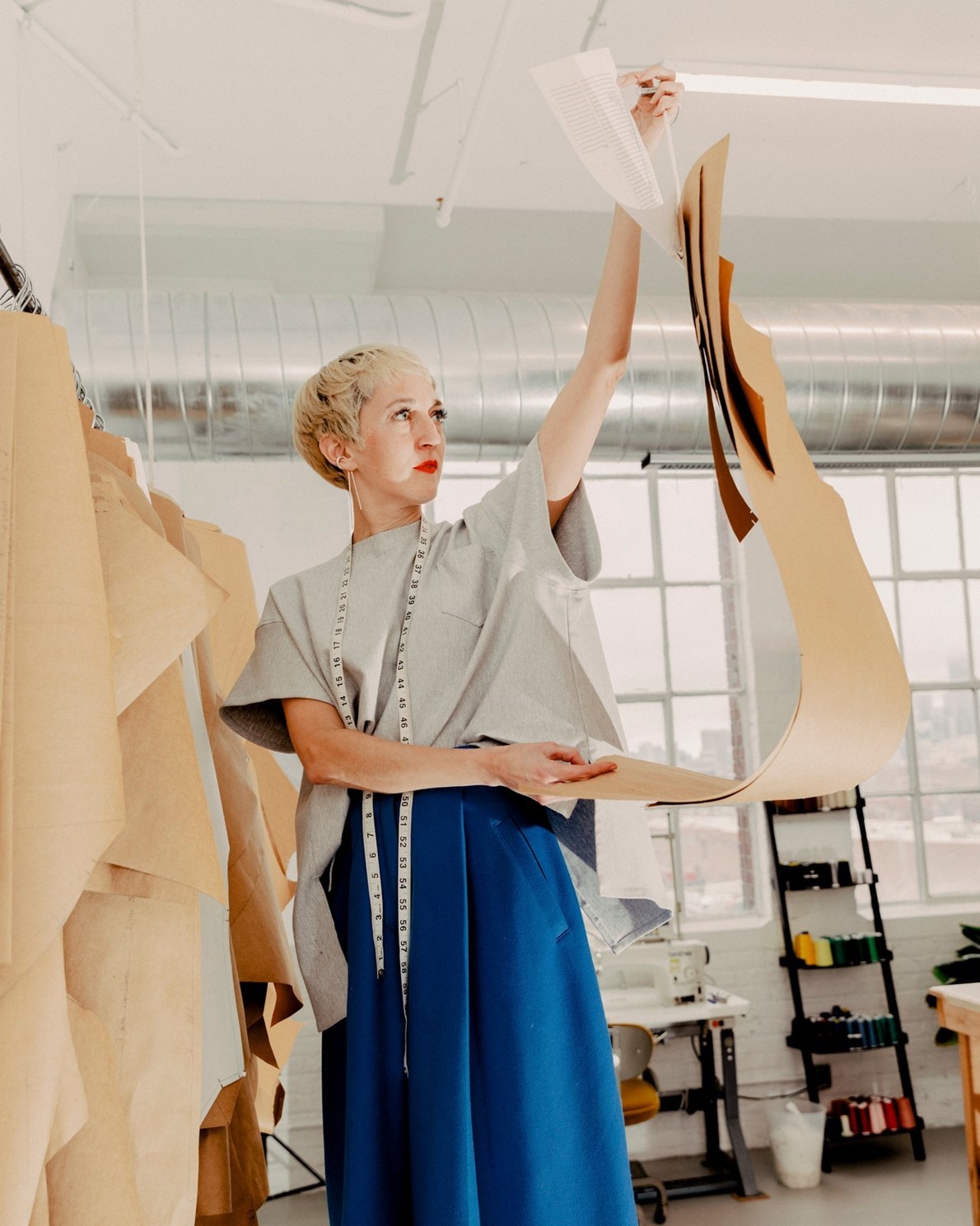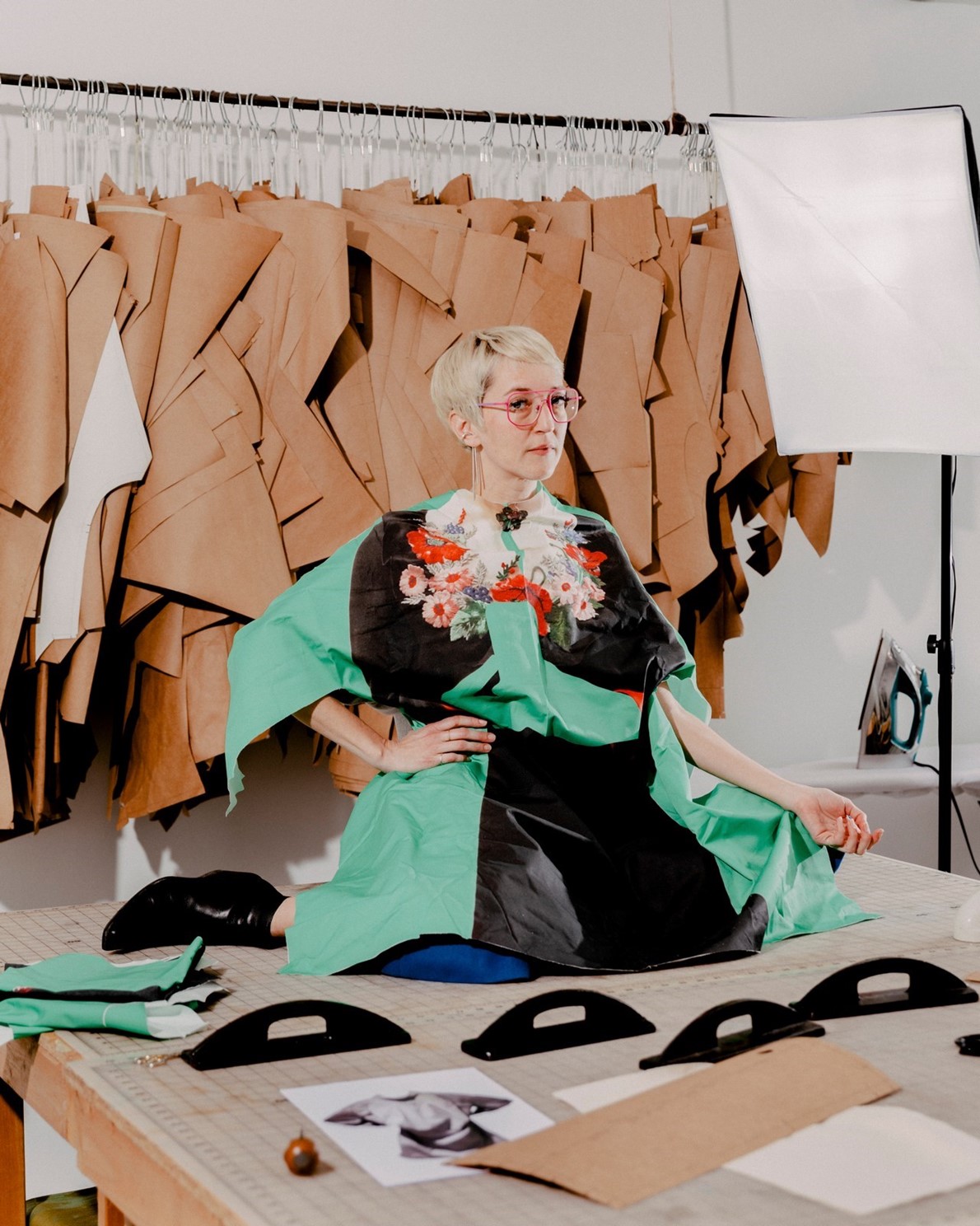NEW YORK, United States — On a Friday in
March, Abigail Glaum-Lathbury was making her way through the
Gucci store on
Fifth Avenue, browsing items from a collaboration with Balenciaga called the
Hacker Project. The collection was conceptual, a way of exploring the ideas of
originality and authenticity in the fashion industry. There were bags whose interlocking
Gs had been replaced with back-to-back Bs and jackets on which “Gucci” had been
printed in Balenciaga’s house font — codes that, in their countless
reinterpretations, have remained some of the clearest and most coveted markers
of luxury.
اضافة اعلان
Glaum-Lathbury picked up a
Balenciaga-purple stretch
top emblazoned with Gucci’s trademark green-and-red stripes. Its $2,700 price
tag suggested quality and craftsmanship: fine fabrics, perfect seams,
hand-embroidered details. But the shirt was made from polyester; the stripes,
Glaum-Lathbury noted, had been digitally printed on the bias of the fabric. It
looked a bit like a counterfeit, which was the whole point: The designers were
trying to make consumers think about value.
A sales clerk approached her and asked: “Do you make
clothes?” Designers, he said, are the only people who look so closely at the
garments in the store. “No one inspects the stitching,” he said.

Glaum-Lathbury, 38, is a clothing designer, though
her own small and short-lived label folded nearly a decade ago. Now she is an
associate professor of fashion design at the School of the Art Institute of
Chicago and occupies her off hours with personal and conceptual projects
examining the qualities that make a garment desirable.
“One of many, many things that I love about clothing
is that it is inherently social,” she said. An earlier project she worked on, a
utilitarian jumpsuit available in more than 200 sizes, was created to inspire
discussions about the quality of disposable, ill-fitting fast fashion; another,
which laid out plans for a “community-supported underwear” collective, was
meant to spark conversations about ethical and sustainable production.
Neither of those grabbed the attention of big
fashion brands, but she hopes her newest one will. Called the Genuine
Unauthorized Clothing Clone Institute, it revolves around what Glaum-Lathbury
has termed “clothing clones”: garments whose patterns are made from mirror
selfies she has taken in luxury fitting rooms. Back in her studio, she edits
every image to blur any trademarks or copyright-protected patterns — the
signature Gs, for instance — and crops it to isolate the garment’s outline.
Then she prints the image onto fabric, creating a pattern for a new piece of
clothing.
Though the project’s initials may spell “GUCCI,”
Glaum-Lathbury has taken selfies wearing several designer brands, including
Marc Jacobs, Balenciaga, Louis Vuitton, and Dolce & Gabbana. (A legal
document drafted during the development of her project also nods to a fashion
house in its title, the Policy Regarding the Assessment of Design Accents,
Adornments & Attributes, or PRADAAA.)
The items are not for sale, but patterns are free to
download from the project’s website, as are video instructions for constructing
each garment. And though Glaum-Lathbury does wear the pieces out in the world,
she is less interested in their functionality than how they represent “the
overlap of process, history and legality.”
Threading the needle of fashion law
About six years ago, when
Glaum-Lathbury first started photographing herself in fitting rooms, Gucci had
recently filed a trademark lawsuit against Forever 21; a bomber jacket sold by
the fast fashion company featured stripe webbing at its collar and hems that
looked similar to the kind Gucci trademarked in 1988. It was the quintessential
luxury lawsuit, aimed at a company that had cheapened one of the house’s most
valuable assets: its intellectual property. (Gucci won.)
 Abigail Glaum-Lathburry in fabric printed with an image of her wearing a Gucci garment, which she’ll use to make a dress, in her studio in Chicago, April 8, 2022.
Abigail Glaum-Lathburry in fabric printed with an image of her wearing a Gucci garment, which she’ll use to make a dress, in her studio in Chicago, April 8, 2022.
The case inspired
Glaum-Lathbury to thread legal commentary through every aspect of the Genuine
Unauthorized project, including the design of the garments and the website that
they are displayed on, which is also meant to parody the Gucci website. She
consulted extensively with a team of legal students headed by Amanda
Levendowski, the founding director of
Georgetown University’s Intellectual
Property and Information Policy Clinic, to ensure that the Genuine Unauthorized
project wouldn’t violate the boundaries of trademark and copyright law.
Immersing herself in fashion law has informed the
way she talks to her students about the industry they may soon enter. She plans
to use Genuine Unauthorized as the basis for a book and a lecture series. But
for the time being, she’s focused on the artistic side.
Glaum-Lathbury pins selfies in various outfits on
the whiteboard in her Chicago art studio: a Louis Vuitton coat, a Dolce &
Gabbana dress, a Balenciaga sweater, a
Louis Vuitton T-shirt and a Balenciaga
shirtdress. Each becomes something unrecognizable through her process: a dress
within a dress, suited perhaps for a cartoon villain, or separates digitally
fused into a balloonlike jumpsuit.
The actual silhouettes of designer garments aren’t
legally protected from knockoffs, according to Alexandra Roberts, a professor
at the University of New Hampshire Franklin Pierce School of Law, but the
prints, logos and patterns incorporating logos are.
“That’s kind of the punchline of trademark law,”
Roberts said. “So often what people are paying for is just the name.”
Virgil Abloh,
another streetwear champion, often said that an existing garment need only be
altered by 3 percent to be considered new. While he agitated against
exclusivity in the luxury realm, he also rose to great heights at LVMH before
his death in December.
Even the
fashion houses themselves have engaged with
these questions, brokering collaborations with brands outside of the luxury
realm.
“I don’t think that there is a one size fits all approach to
questioning or intervening in the many issues that plague the fashion industry
or that this work happens in only one way,” Glaum-Lathbury said.
Read more Fashion
Jordan News



